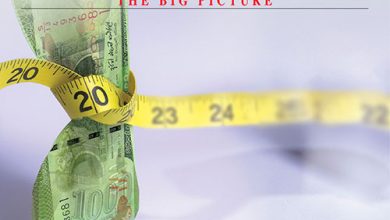COVID-19 STATUS
IS COVID DORMANT OR DOMINANT?
Fazmina Imamudeen examines the reemergence of the coronavirus in Sri Lanka
The last two years and more have been extremely challenging for everyone since the world experienced a pandemic that spread to every region, leaving few unaffected in its wake. And Sri Lanka wasn’t exempt from this dire health crisis.
As we enter the third year of the pandemic and are past the peak of the Omicron variant, the number of new coronavirus infections has dropped over the past six months both in Sri Lanka and abroad – until recently.
According to the most recent statistics made public by the Coronavirus Resource Centre at Johns Hopkins University, there have been 667,385 confirmed cases of COVID-19 in Sri Lanka. There are around 2,200 people who are currently sick, which translates into one out of every 9,800 residents in the area being afflicted. In early August, there were around six newly reported cases of the disease a week for every 100,000 residents in an area.
The number of COVID-19 cases in Sri Lanka is now increasing as stated by the government’s health professionals and this trend is expected to continue. On the other hand, this is not a particularly aggressive growth – since June, there has been a 22 percent increase in cases, according to a study by the WHO.
In terms of global impact, the US witnessed a spike in the rate of new infections in May. This occurred even though there were red flag warnings indicating that SARS-CoV-2 was becoming endemic.
The fact that many instances of COVID-19 infections are not being reported despite the availability of home testing facilities makes it highly likely that a large number are not being accounted for.
Current trends are the result of several variables.
Many factors contribute to the rapid spread of the disease including the emergence of the BA.2 sub-variant of Omicron and the more recently identified sub-variant known as BA.2.12.1, the transient nature of the protection afforded by vaccination and prior infection, and the nationwide relaxation of mandates (such as wearing masks) and other restrictions.
On the other hand, it seems that Sri Lanka is taking a cautious approach to the situation. The authorities in charge of public health are keeping a close eye on the situation and putting safeguards into place in response to this intensification. They are trying to ensure that no new clusters
of COVID-19 variants occur and there aren’t any further outbreaks.
Sri Lanka is also at risk from an increase in the prevalence of other infectious diseases and seasonal ailments. As pointed out by specialists in the field, the recent spike in cases of influenza was primarily attributable to the inclement weather.
There have been confirmed cases of dengue fever too and its rapid spread has been likened to the flu. In some instances, patients displaying mild symptoms were misdiagnosed and thought to be having pneumonia.
However, there is some uplifting information to share as well – there have been no reports of the COVID-19 subtype known as BA.5 in Sri Lanka.
This strain, which was discovered for the first time in South Africa in February, is currently the variant found most in the US. Though it has been established that vaccination reduces the risk of contracting a severe bout of the illness, it has also been noted that the new variant is exceedingly communicable and immunisation has only a relatively weak response rate to it.
According to Reuters, Sri Lanka has administered at least 39.6 million doses of COVID-19 vaccines. If we assume that each person needs two doses of the vaccine, this quantum of vaccines should be sufficient to protect around 90 percent of the population that’s eligible to receive it.
Let’s keep COVID-19 at bay by repeating what may sound like a broken record: don your mask!
Since the advent of the economic crisis, more and more people are using public transport, and this is making trains and buses more crowded than usual. Keeping your personal space to a minimum of one metre is hard in such a situation so keep those masks handy. Put some hand sanitiser in your bag and use it frequently.
Given that we have done well so far in combatting the virus in relative terms, let’s keep it that way… at least until we can coexist with COVID-19.







